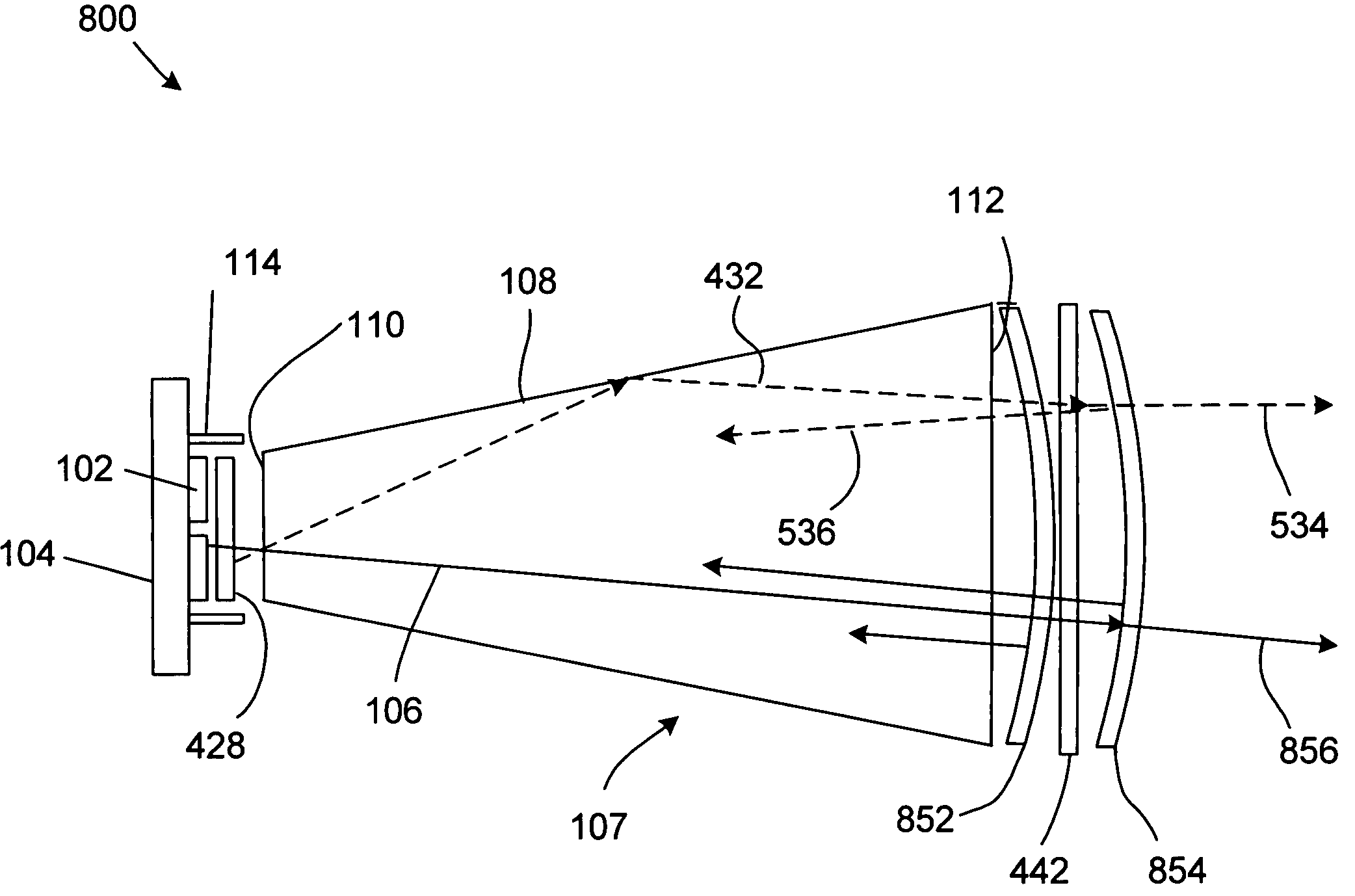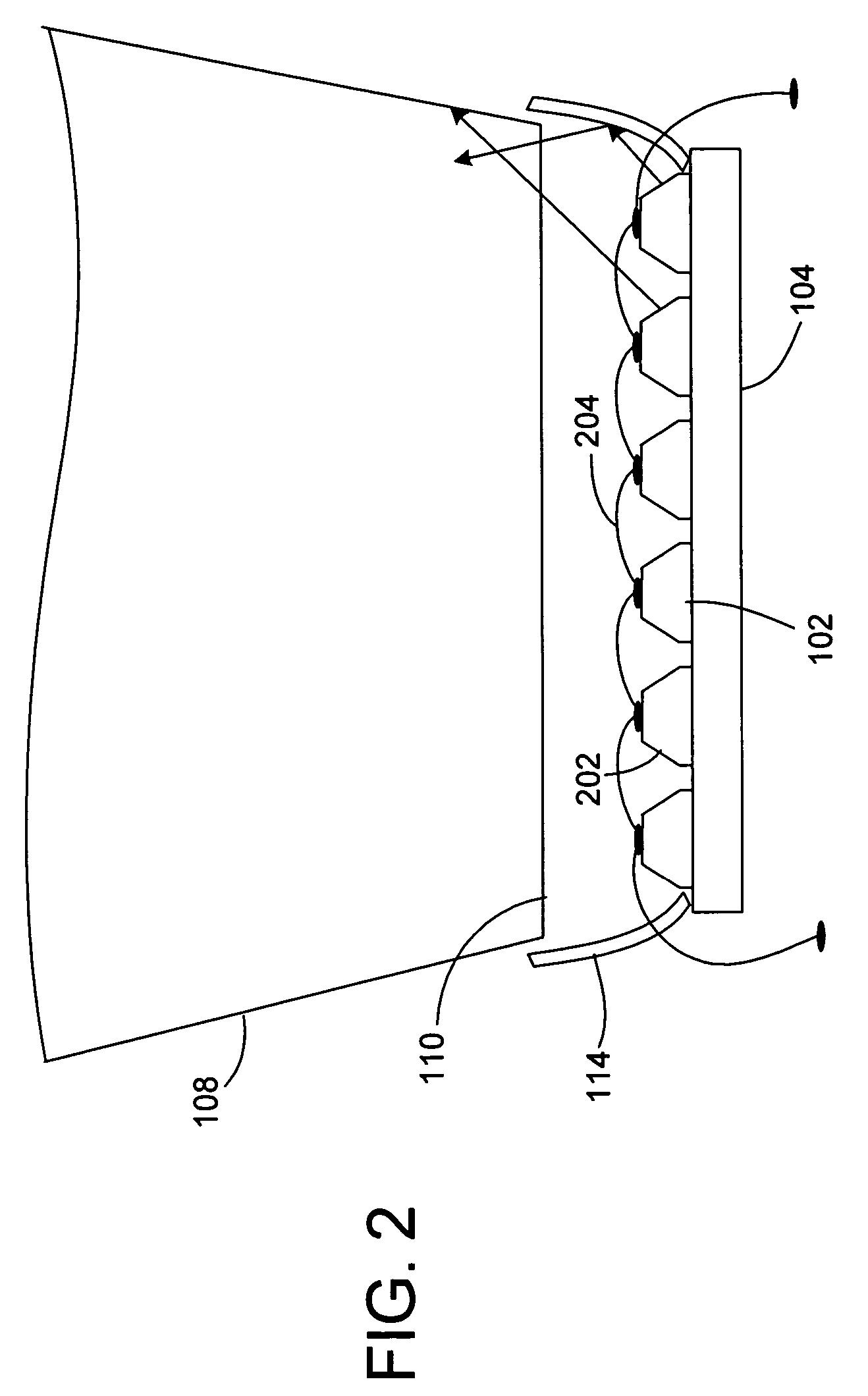Polarized, multicolor LED-based illumination source
a multi-color led and illumination source technology, applied in the field of illumination systems, can solve the problems of compounding the problem of inefficiency in the green portion relatively inefficient leds that operate in the green region of the visible spectrum, etc., and achieve the effect of increasing the angular rang
- Summary
- Abstract
- Description
- Claims
- Application Information
AI Technical Summary
Benefits of technology
Problems solved by technology
Method used
Image
Examples
Embodiment Construction
[0021]The present invention is applicable to illumination systems, and is more particularly applicable to illumination system for displaying images, for example projection systems such as may be used in projection televisions and displays, monitors and the like.
[0022]It is well known that green light emitting diodes (LEDs) are less efficient than LEDs operating in the blue and red regions of the visible spectrum. Consequently, LED-based illumination systems require more green LEDs than blue and red LEDs to achieve desired levels of brightness and color balance. Instead of generating green light directly with an LED, another approach is to generate light at a first wavelength, for example blue or UV wavelengths, and to convert the light at the first wavelength to a green wavelength.
[0023]One exemplary approach that may be useful for wavelength converting light from an LED to generate green light is schematically illustrated in FIG. 1. An exemplary illumination system 100 has an array...
PUM
 Login to View More
Login to View More Abstract
Description
Claims
Application Information
 Login to View More
Login to View More - R&D
- Intellectual Property
- Life Sciences
- Materials
- Tech Scout
- Unparalleled Data Quality
- Higher Quality Content
- 60% Fewer Hallucinations
Browse by: Latest US Patents, China's latest patents, Technical Efficacy Thesaurus, Application Domain, Technology Topic, Popular Technical Reports.
© 2025 PatSnap. All rights reserved.Legal|Privacy policy|Modern Slavery Act Transparency Statement|Sitemap|About US| Contact US: help@patsnap.com



